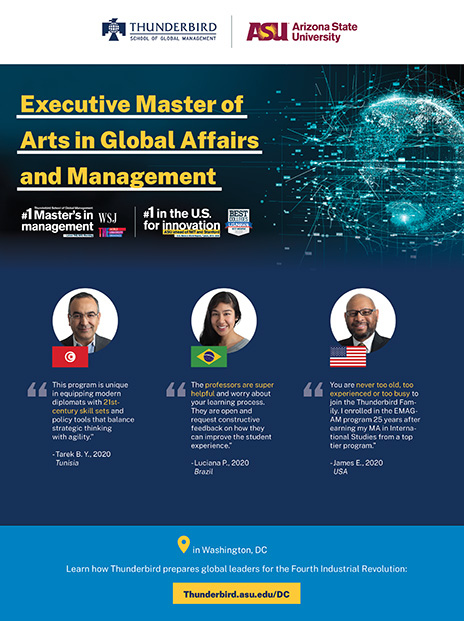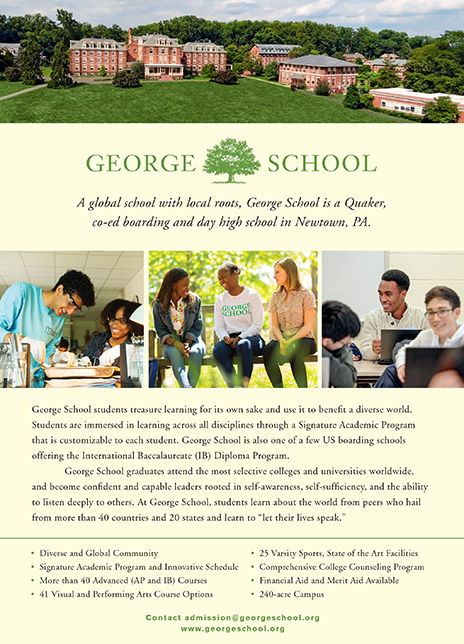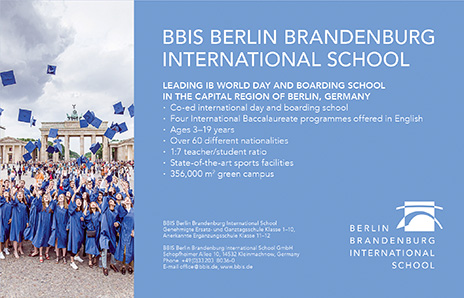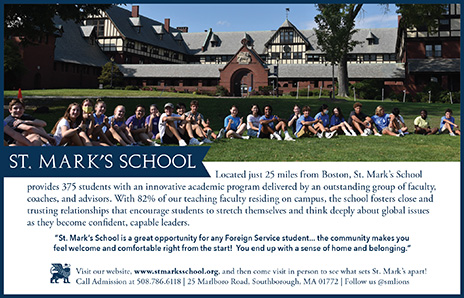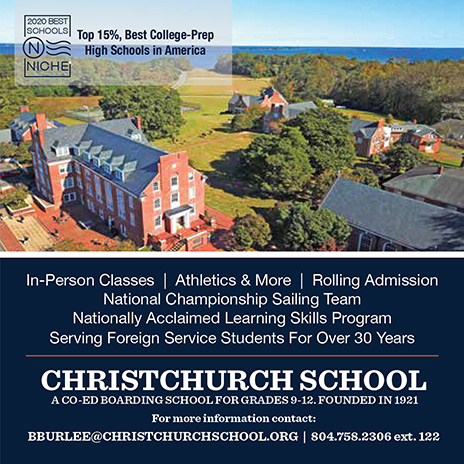Transitioning FS Kids to U.S. Public Schools: What You Need to Know
Here are tips and suggestions for FS parents whose children will enter U.S. public school following a move back to the States.
BY CHARLOTTE LARSEN

Vector Juice / shutterstock.com
Children’s educational journeys in the Foreign Service can take many turns, but perhaps the most confounding is when they return to a U.S. public school after attending an international school overseas.
Many Foreign Service parents find the process of navigating the transfer of their children to a U.S. public school very different from the adjustment to an international school. The issues become more complex as children reach middle and high school age, or when children have learning differences and parents must determine which state, school district and specific school would be the best option.
As a parent, you don’t want to be caught unaware of the academic, logistical and other transition challenges upon moving back.
Being armed with information on new, evolving trends that FS families face when heading to a public school in the U.S. from an overseas international school can help mitigate enrollment delays and undue stress on both students and parents.
How to Prepare
Parents can start with the Department of State’s Global Community Liaison Office, formerly known as the Family Liaison Office. GCLO can provide parents from all FS agencies a wealth of information.
Parents can review the GCLO Education and Youth “Transitioning from School to School” web page, or talk with one of the GCLO Education and Youth team’s subject matter experts (SMEs) who can offer guidance and resources to help inform and ease the transition back into local U.S. school systems. You can contact the GCLO Education and Youth Team at GCLOAskEducation@state.gov.
Parents can also reach out for support and guidance to their regional education officer (REO) in the Office of Overseas Schools (OS) if they have questions about the curriculum and transcripts from their child’s international school. Each of the six REOs is assigned oversight of a geographic region, and together, they cover the almost 200 department-assisted international schools overseas. They are veteran educators with extensive U.S. and international school leadership experience.
The REOs are well versed in the K–12 schools at post, the requirements for return to U.S. public schools and the process of transferring to the next international post. They give guidance on the full range of questions that parents should be posing to international schools related to the curriculum offered and their transferability to the next posting.
REOs can help parents understand how the courses taken in international schools can be transferred to U.S. public schools. It becomes more complicated in the middle and high school years, so connecting with the REO before leaving post is the best way for parents to understand what they should be asking the new school in the U.S. regarding courses and graduation requirements. Contact your region’s REO.
Transferring from the IB Program
Recently, GCLO and OS have been advised of some special circumstances families should be aware of prior to returning to the U.S. public school system if their child has taken International Baccalaureate courses in middle or high school at an international school.
Recently, there have been a few cases in several DMV (the D.C., Maryland and Virginia region) school districts in which the student was denied admission to the anticipated grade level. This was based on an interpretation by a district-level staff member who reviews transcripts to determine the appropriate grade level.
Although short- and long-term academic planning is important, it is not the only factor parents need to consider when moving back to the U.S. public school system.
REO for Western Europe Dr. Christine Brown suggests that as early as possible before the transfer, as students return to U.S. public high schools or move between international schools, parents should work with the sending and receiving school counselors to make sure that middle and high school courses studied, and the resultant transcripts, reflect the course titles needed to advance from grade level to grade level.
“Parents should become familiar with the U.S. middle and high school requirements before they go abroad,” Dr. Brown suggests. “Often these are posted on the website of the U.S. public school that parents might consider using when they return to the U.S.”
The REOs can help parents understand the differences between the two systems and what courses might be required that the international school may not offer. It is the family’s responsibility to ask the school overseas to ensure that the course titles and descriptions in the transcripts they send match up as closely as possible to the standard courses per grade level in the U.S. school curriculum.
Transferring from the British Curriculum
Some FS families have faced another curriculum-related roadblock after returning from British schools having taken the General Certificate of Secondary Education (GCSE) exams given in the 10th grade. Some districts and states in the United States consider that successfully passing the British GCSE exam is the equivalent of receiving an American high school diploma. This can be problematic.
Dr. Brown worked extensively with a Foreign Service family whose child had been told that though age 16 and having passed a 10th grade exam, they would not be permitted to be enrolled in the district high school as a junior. They were considered to have graduated from high school. Dr. Brown cautions: “If parents are choosing a British school at a post, they should investigate the consequences of their child passing the GSCE in the district or state to which they plan to return before high school graduation.” Contact the REO or the GCLO office for guidance.
Focusing Your Search
Some FS families returning to the DMV move back to their former home or neighborhood because they want their children to be in the school district they left. Other families don’t have roots fully established in a specific DMV location and thus have the choice to move anywhere.
How do parents focus their search in three different states—and a dozen or so different school districts? “Choosing a School for Your Child,” published by the United States Department of Education, is a helpful guide for parents that outlines ways for them to exercise choice in school selection.
Being able to choose where to live based on the public school district or neighborhood schools, parents may have a choice between neighborhood schools, charter schools, out-of-district schools (in a lottery system like Washington, D.C.), or a private school. In narrowing down their school choice, parents should focus on the educational needs of their children, their social and emotional needs, special needs, gifted and talented considerations, and other areas of interest and special programming their children can take advantage of.
Managing both your and your children’s expectations for their re-entry is a big part of the process and ultimate success.
One size does not fit all. If location is not a determining factor for choosing a school for your child, the following three factors should guide your search:
• Think about your child and your family’s needs. What kind of learning environment and student-to-teacher ratio is best for your child? If your child needs after-school care, does the school offer it? What kind of learning style best suits your child, and which schools offer the subject focus that your child excels in?
• Start early, and learn all you can about the schools you are considering. Find out about the school’s curriculum, its approach to learning, facilities, behavior policies, safety measures in place, extracurricular offerings and academic performance. You can research a school’s “report card” at GreatSchools, a nonprofit organization dedicated to providing high-quality information supporting parents’ search for quality education for their children.
• Once you’ve decided on a school, or narrowed it down to a few, find enrollment requirements on their websites. Admissions processes can vary by district, so start early and make sure you have everything you need. Make sure not to miss enrollment application deadlines. If you run into enrollment issues in the DMV, please reach out to GCLO’s Education and Youth team at GCLOAskEducation@state.gov for guidance.
“It’s More Than Academics”: Other Considerations
Although short- and long-term academic planning is important, it is not the only factor parents need to consider when moving back to the U.S. public school system. Just like when moving overseas, parents and students must look at the school environment and how a child would fit there.
Managing both your and your children’s expectations for their re-entry is a big part of the process and ultimate success. It may look very different from their adjustments to life at post overseas. Communicating often and listening are key to ensuring that you are truly hearing their concerns, desires, goals, fears and hopes for a new school.
Remember that they are the ones who will be there every day, five days a week.
Resources and Services
Although the unknown can be daunting, the good news is that there is a lot of support in the FS community. A great place to start is the Foreign Service Youth Foundation, a nonprofit organization dedicated exclusively to supporting children of U.S. Foreign Service employees.
FSYF offers a variety of programs, contests and resources for members worldwide. For families serving domestically, re-entry workshops for middle and high school students are provided to help your children meet other FS kids in the area, plus other workshops and regular family events.
To ensure that children are active participants in their transition back to the U.S., there are resources specifically designed for them.
For parents, GCLO’s “Bouncing Back: Transition and Re-entry Planning for the Parents of Foreign Service Youth” was written to offer parents guidance on how to help their children transition to the U.S. This publication—the revised version of “According to My Passport, I’m Coming Home,” first published in 1998—includes research and resources from professionals in the field of youth mobility and was written by adults and children who experienced the Foreign Service lifestyle firsthand.
In creating “Bouncing Back,” GCLO’s Education and Youth team incorporated excerpts from the original publication, updated the content and focused on how parents can help their Foreign Service child make a smooth and healthy transition back to the U.S. Included are resources and guidance on talking with school personnel, a school enrollment checklist, and healthy coping strategies.
To ensure that children are active participants in their transition back to the U.S., there are resources specifically designed for them. FSI’s Transition Center offers “The Amazing Adventures of [Write Your Name Here]: A Guided Journal to My International Move,” a resource for elementary school–aged children who are moving overseas with foreign affairs agencies.
Although written to start discussions between children and parents as they prepare and process for an international relocation, the book contains plenty of tips and tools that can be used to prepare children for any move. There is also a parent’s companion journal.
For older children, FSI’s Transition Center offers its first “zine” (a new series of magazines created for kids age 11-15), “Transitions: Preparing for Your Move.” These zines offer guidance to help middle school students navigate the challenges and excitement of living overseas and in the United States.
Although you may be a seasoned parent having navigated multiple international moves, each move is different, and your child is likely at a different stage of life and education each time. Knowing who to turn to in the State Department for resources, guidance and answers is the first step in the right direction.
Understanding what pitfalls to be preparing for before the move, what documents to be collecting, and starting your research early can all aid in ensuring that the transition back to a U.S. public school from overseas is an experience you and your child can not only survive but thrive in.
Remember that your child, having navigated many moves, has likely gained coping skills that will help in making the transition “home.”
Read More...
- “Preparing for the SAT and ACT: Why and How You Should Do It,” by David Huemer, The Foreign Service Journal, December 2021
- “COVID on Campus: How FS College Kids and Their Families Are Managing the Uncertainty,” by Donna Scaramastra Gorman, The Foreign Service Journal, December 2020
- “Luanda to Ohio: A Family Journey,” by Monica Rojas, The Foreign Service Journal, July-August 2020



